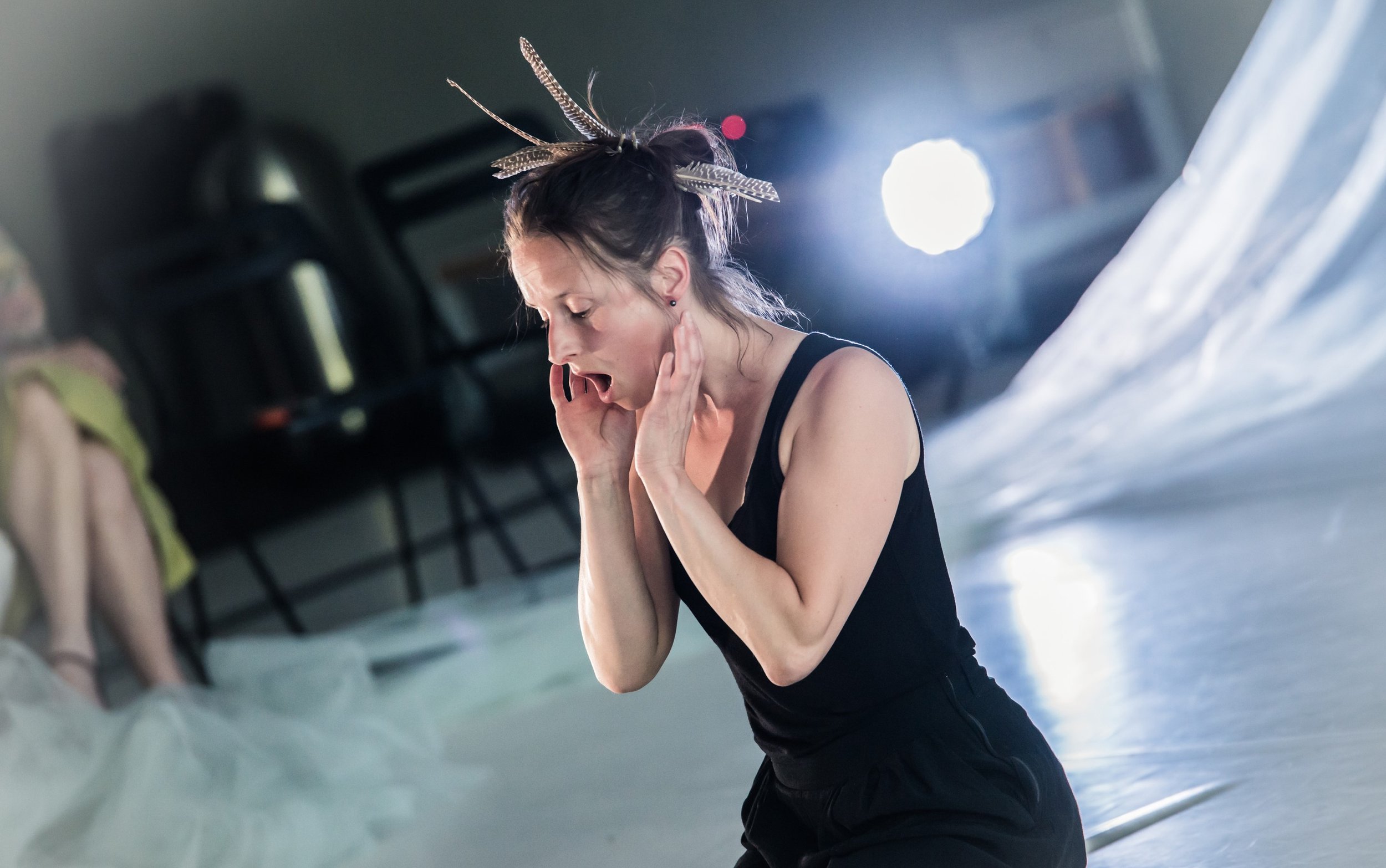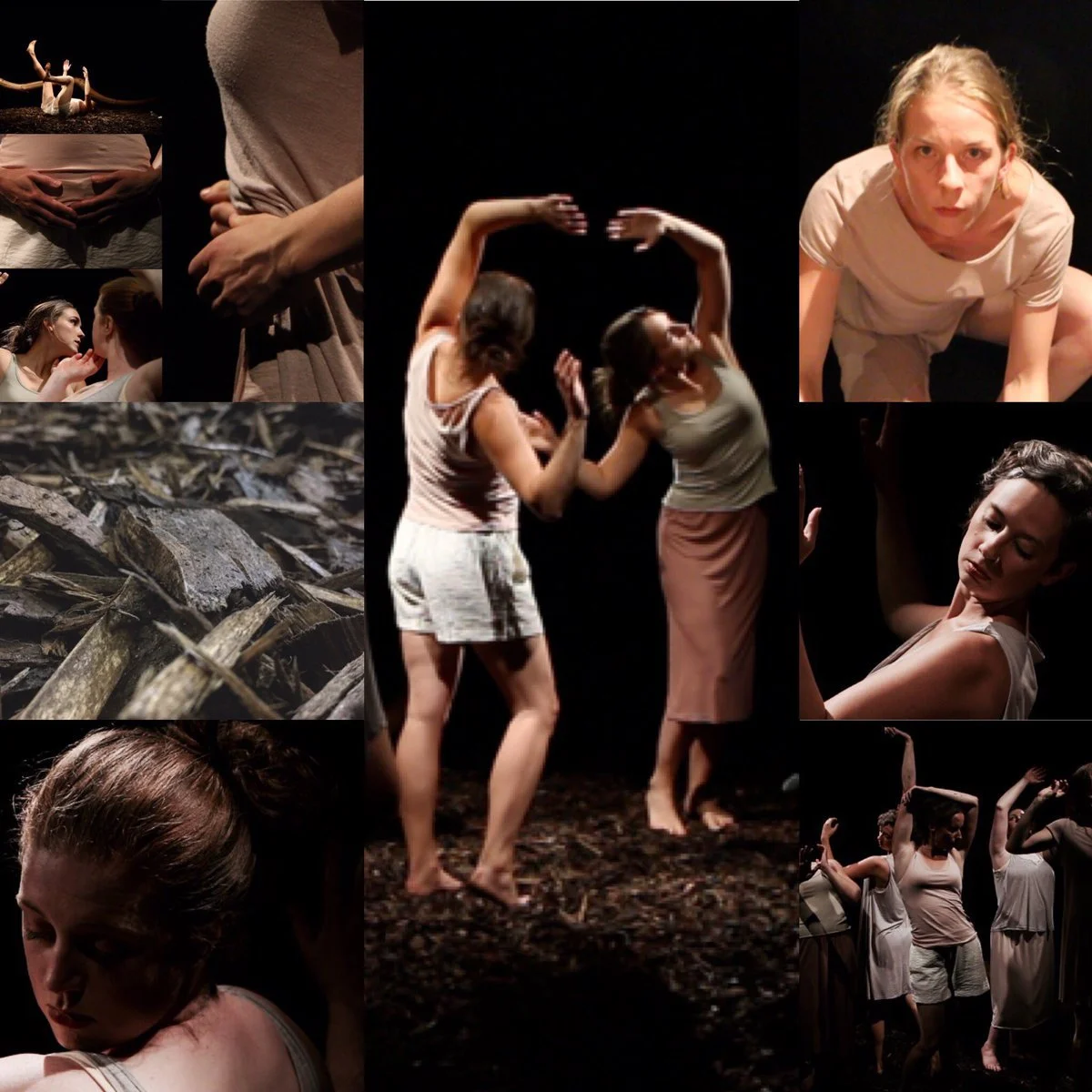
Practice as Research
Most of Judita’s work involves an element of practice as research (PaR), either as part of the creative process, when working on interdisciplinary projects, or using new technologies. Below are three examples of Judita’s PaR work between 2016-2018.
Herring Girls: Creative Process as Research
Herring Girls was a semi-improvised dance theatre piece.
The project was helmed by Vicci Riley, a dancer, movement director and teacher with interests in contact improvisation, somatic work, working with local communities and performance improvisation, in collaboration with Judita Vivas.
Between 2016-2018, Vicci and Judita organised 3 creative residencies: The Bluecoat (Liverpool, UK), Metal (Liverpool, UK) and Arts Printing House (Vilnius, Lithuania).
The finished piece was performed by Vicci in 2019 and was funded by the Arts Council England.
Herring Girls built on the existent improvisational strategies (movement-text-object work-voice) and, using training, skill share, various performance tasks and audience feedback, looking for a systematic approach to devising a semi-improvised performance.
The creative work involved two female performers, co-existing in and responding to the landscape they created around themselves.
The improvisational structure of the performance was both abstract and specific, inspired by the herring girls, their rich imagery, physical labour and camaraderie, as well as the broader themes of fishing, seascapes and female inter-dependence.
Interdisciplinary Collaboration: C.R.A.C.K.S.
C.R.A.C.K.S. (Collaborative Research on Architecture, Creative Kinetics and Somatics) was a creative research project, fusing architecture, movement and performance, led by Carolina Vasilikou, architect, researcher and educator, and Judita Vivas.
We asked “What is a truly inclusive space?” and how can we redefine the way we design and inhabit this space, thinking in ways of movement?
The PaR phase of this project took place between 2018–2019 and culminated in a public workshop in Marpissa (Paros, Greece) and a conference paper presented at the University of Malta.
How is C.R.A.C.K.S. different from other movement notation practices?
Instead of denoting movement, we traced it – looking for responses, associations and patterns a specific movement leaves in the architect’s imagination, and how it can be immediately transformed into a material form.
A unique practical methodology: working at the intersection of improvised movement, the architectural practice of design-by-making, employing 3D architectural materials, and exploring patterns of human curiosity.
Daphne in Three Movements: Working with New Technologies
Daphne in Three Movements was a live performance and an online audio-visual installation, consisting of three videos, or “movements” – The Chaste, The Change and The Tree – that explore the mythical Greek character of Daphne and offer an immersive digital contemplation of the relationship between sound, image, human body and nature.
This live and digital piece was a result of a research collaboration between Foxtale Ensemble, Daisy Orton (performer), Rosemary Klich (project leader and dramaturg), Stacie Lee Bennett (videographer) and Eoin Furbank (sound designer) which took place at the University of Kent (Canterbury, UK) in 2018, funded by the Arts Council England.
The project explored the use of interoception in performance, the links between the embodied physical and vocal performer training, binaural sound and video, and the making of digital artwork. How do these, seemingly separate, aspects inform, complement and feed into one another during a collaborative creative process?



